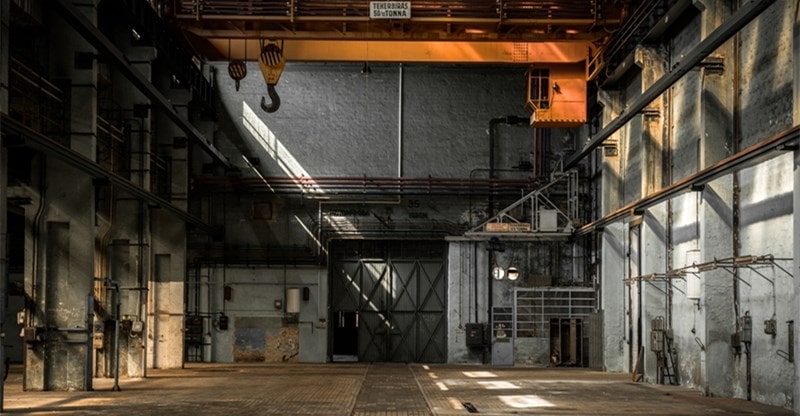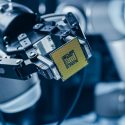Growth Trends of Industrial Actuators in the United States
All the industries apply linear actuators in an increasing number of applications. Especially important are developing countries where all types of industries are developing. Though the markets of technically and socially advanced countries move forward, too. They implement different automation solutions. It, in turn, guarantees the top efficiency and productivity of their facilities.
Thus, the demand for linear actuators in the world is growing constantly.
Nowadays, linear actuators are applied in all the industries:
• Production machinery uses widely heavy-duty actuators for many procedures. There, belong also table lifts and other devices that facilitate the work of people;
• Robotics and medicine rely on mini- and micro-actuators to provide the top precision and accuracy of movement;
• The transportation industry uses actuators for loading and unloading procedures;
• The aerospace uses linear actuators widely. It relies on these items because they are reliable, have a long service life, and they don’t need any maintenance;
• The defense industry uses actuators in all types of vehicles and machines to position different elements;
• The agriculture counts on top-performance and enduring qualities of actuators.
These are just a couple of examples. If we say that all the industries to some extent depend on linear actuators, this will not be an exaggeration.
What about the United States?
The main actuator manufacturers are still China. Though, the USA can boast with top-quality and reliability of all the actuator production. Also, there are some enterprises, those that have been functioning for ages and the newer ones. They produce linear actuators with some specifications that one can hardly find by other manufacturers.
For example, Progressive Automations, one of the leading native US brands, produces rather affordable items. Specifically, you can check their offers if you need electric actuators. There you can find linear actuators for all the purposes:
• Manufacturing;
• Domestic application;
• High-precision industries, etc.
Another leader in the manufacturing of actuators is Tolomatic. This brand is world-known for its variety of products. It is worth noting that actuators are only one of many directions in which the manufacturer works. Tolomatic is famous for its proprietary ServoWeld® model. In has become irreplaceable in robotics. Also, it is perfect for high-precision welding in automotive applications.
Harmonic Drive is also one of the companies that have been working for generations. This manufacturer is known for plenty of products, with linear actuators as one of the directions. While there are only three series of actuators but they are known for top precision level and incredible reliability.
Main Trends of Linear Actuator Application
Now, many industries have already moved from other actuator types (hydraulic and pneumatic) to electric actuators. It has become possible because of the many benefits that electric actuators bring:
• They don’t require maintenance: an actuator is pre-lubricated and sealed. You can use it for several decades without opening it;
• They are safe: an actuator doesn’t contain any liquids. Thus, no leaks are possible unlike in the case when hydraulic actuators are used;
• They are accurate: the precision level is much higher than the precision level of any other actuator type;
• The top controllability level is also one of the major benefits. You can control them with many devices. Come of them can be programmed to control several actuators simultaneously;
• The noise generation level is minimal. Of course, one shall distinguish heavy-duty actuators and the actuators for domestic applications.
Thus, it is expected that the growth of the linear actuator’s application will continue.
What Industries Are Going to Apply Linear Actuators Widely
There are though industries for which the application of linear actuators poses more interest than for the others.
1. Automotive Industry
In the automotive industry, the application of linear actuators is crucial. They are widely applied to different parts of autonomous vehicles. Thanks to them, many systems can work:
• Sensors detect objects and send the information to special units that control actuators. Actuators can adjust the lights to prevent glare.
• Sensors detect cars that drive in the same direction. When a collision danger arises, sensors send the data to the vehicle control system. The vehicle releases an alert. If the driver ignores everything, actuators will activate the braking system to prevent the collision or at least to mitigate the consequences.
• Emergency assist works similarly to the braking assist. When danger arises, emergency assist will send a signal to the actuators that manage the braking system, and it stops the car.
2. Medicine
In the medical field, actuators have been applied for several decades. Now, they are improving constantly. Thanks to the linear actuators, many operations became possible:
• They are used in robotic assistant surgeries for the major precision of incisions. It allows reducing the risks of bleeding, infection. The minimally invasive intrusions reduce the time needed for recovery, and so on.
• Linear actuators are used in dental chairs to facilitate the work of dentists and make the procedures more comfortable for a client.
• Medical beds use linear actuators to make the life of patients more convenient. A bed can be lowered and lifted to facilitate patient care.
3. Agriculture
This demanding industry requires top automation levels to facilitate human work. With actuators, many automatic operations became possible that earlier were performed by people. Actuators are used in harvesters, planters, etc. They make the work of people easier and increase the productivity of fields.
With linear actuators, one can automate the entire fields to be irrigated. This technology makes it possible to use terrains that were earlier unusable for agriculture due to improper conditions.
Final Thoughts
The importance of linear actuators in the industry is more than evident. They are applied in all industries. Thus, the need for actuators is increasing. The manufacturers invest in the development of new, more resistant solutions with top precision.
In an increasing number of applications, actuators either change the entire approach or facilitate the operations that normally, were performed by people. Automated mechanisms replace people in dangerous, harsh, or monotonous work. It is still too early to talk about a complete replacement of people by machines. People are still needed for work that requires a creative approach and non-standard decisions.
Author Bio: Hayley Mann is a technology enthusiast specializing in automation methods of ergonomics devices. Her engineering background helps her to create interesting articles on technical topics, making them understandable for all readers.



